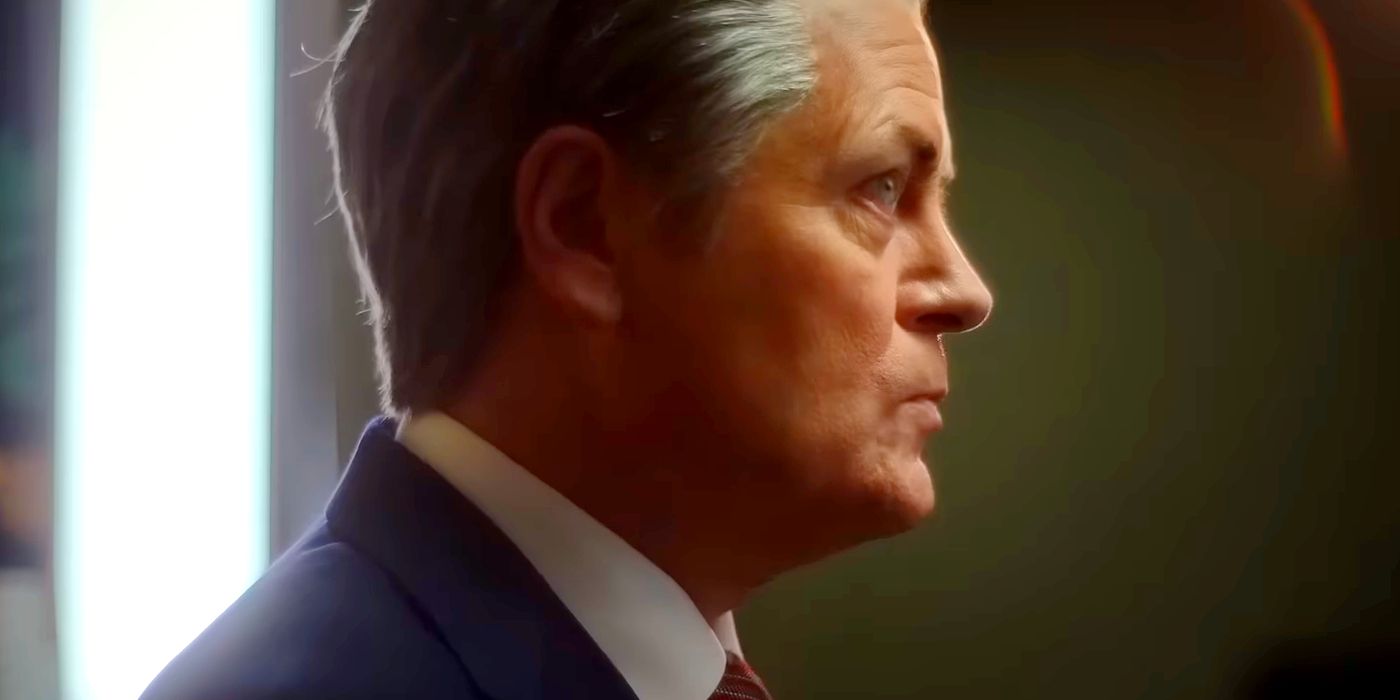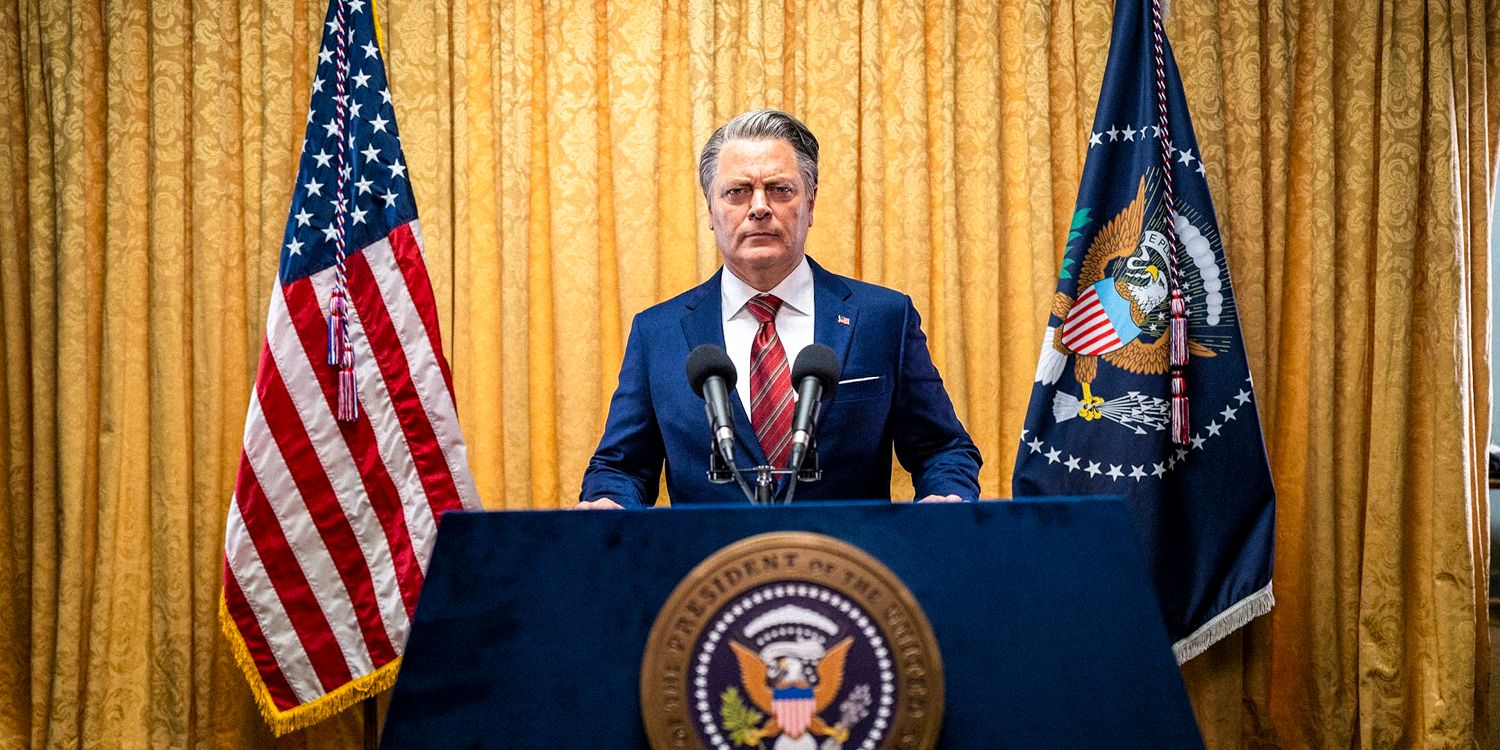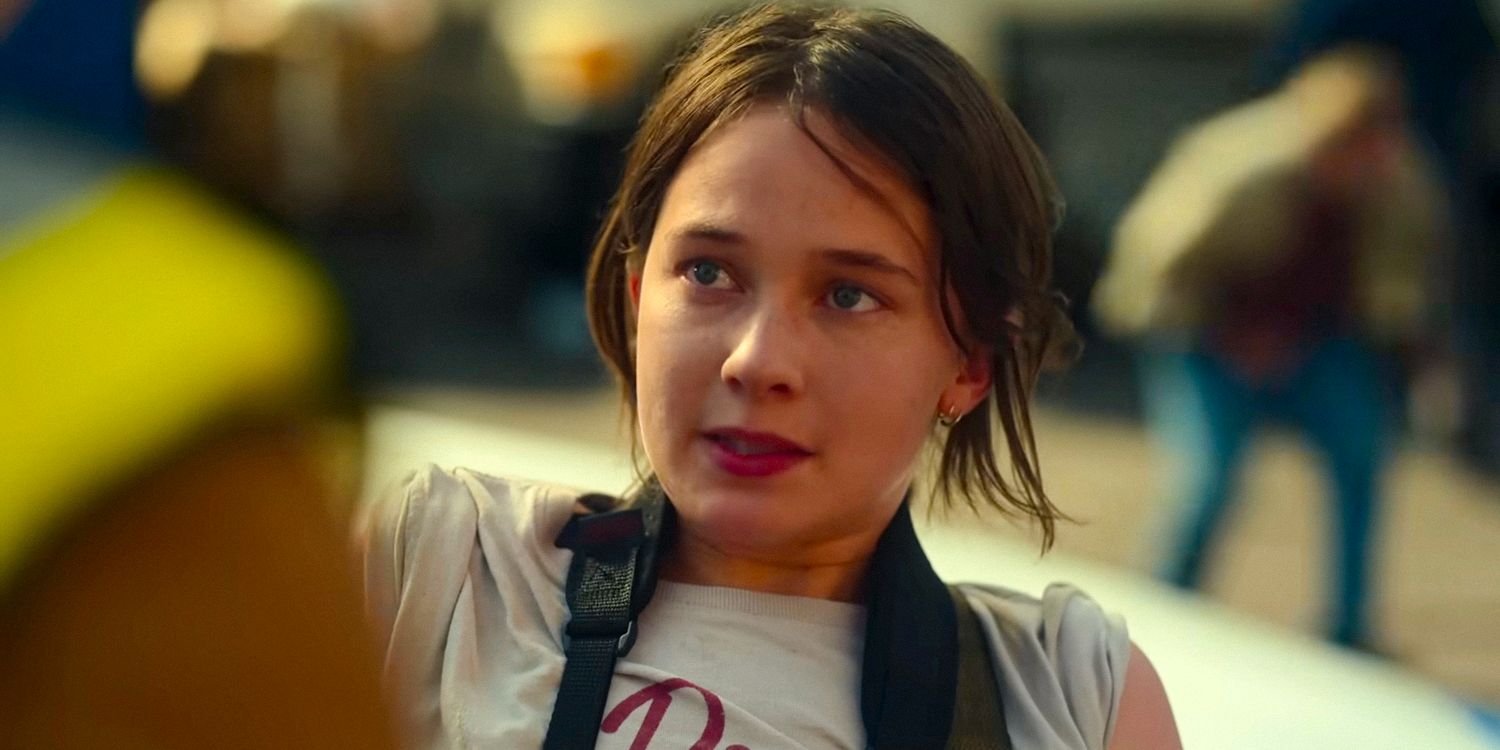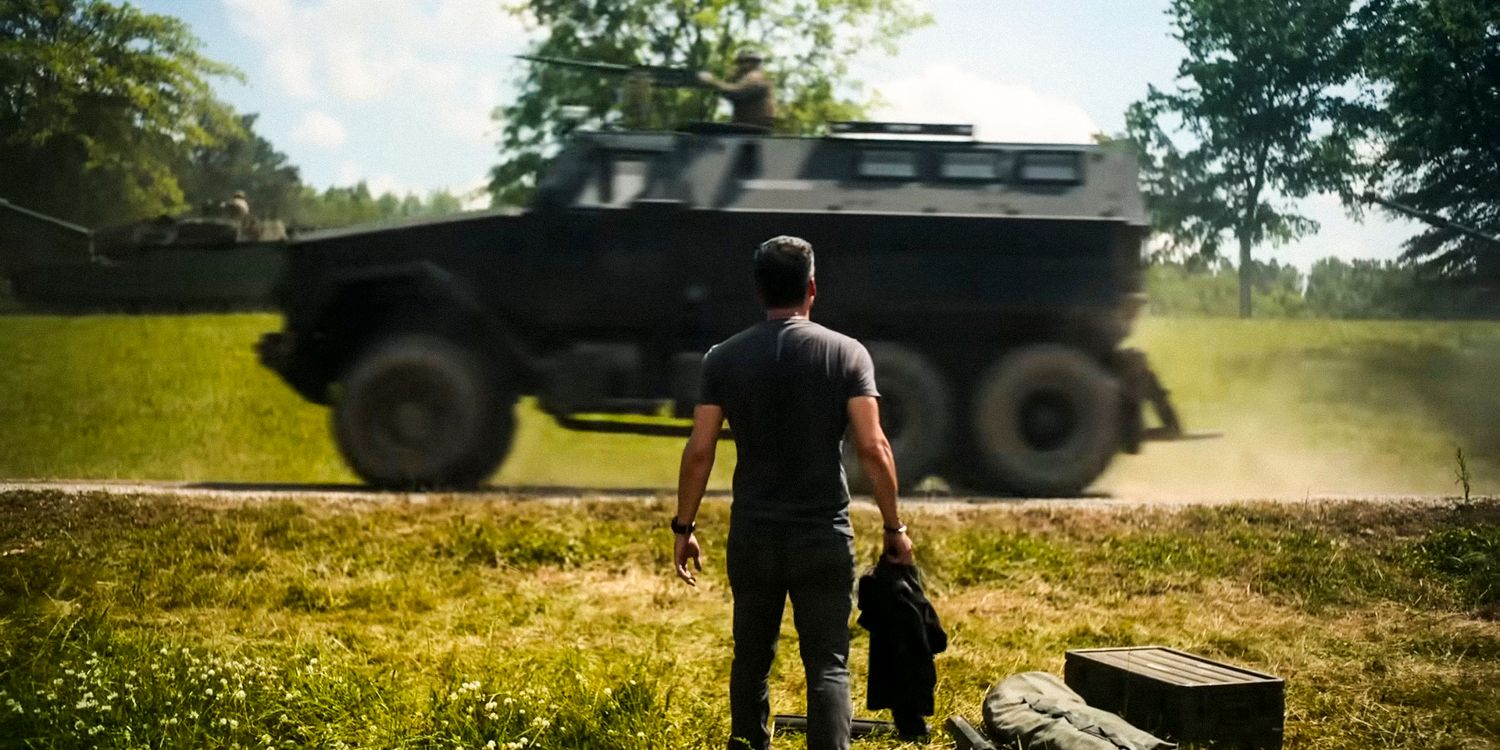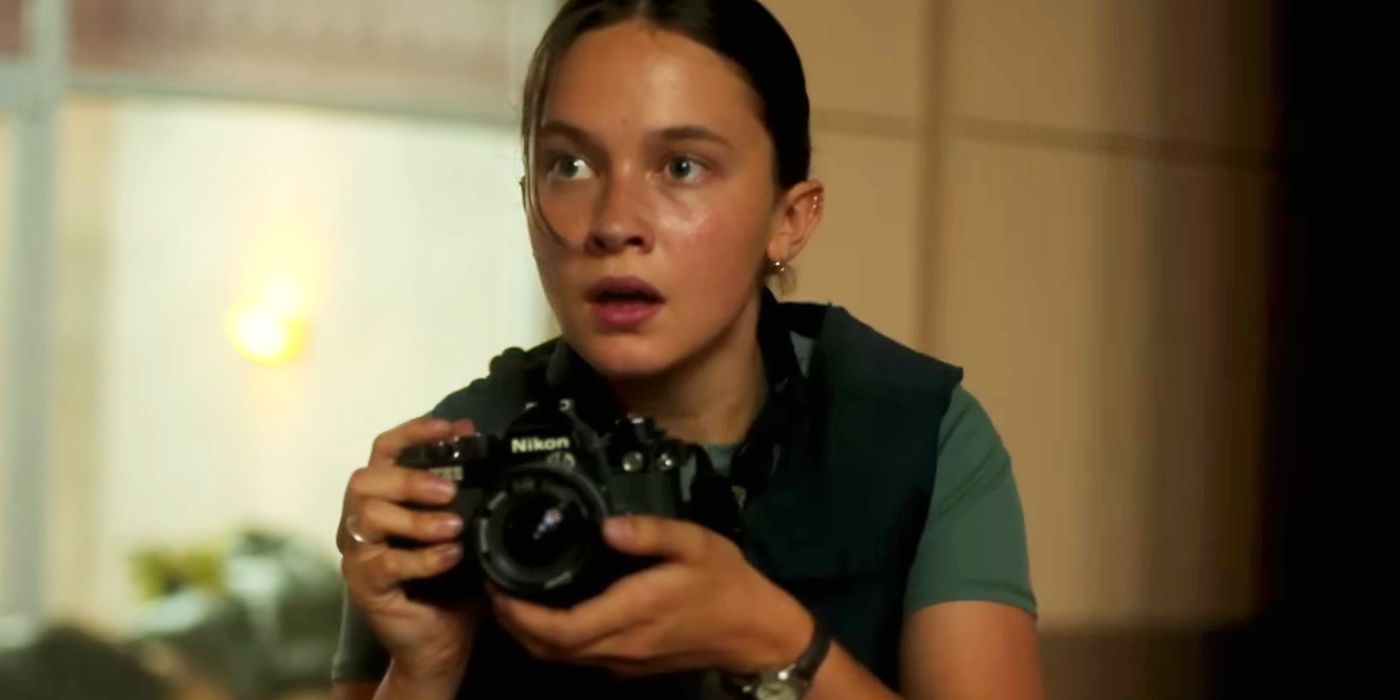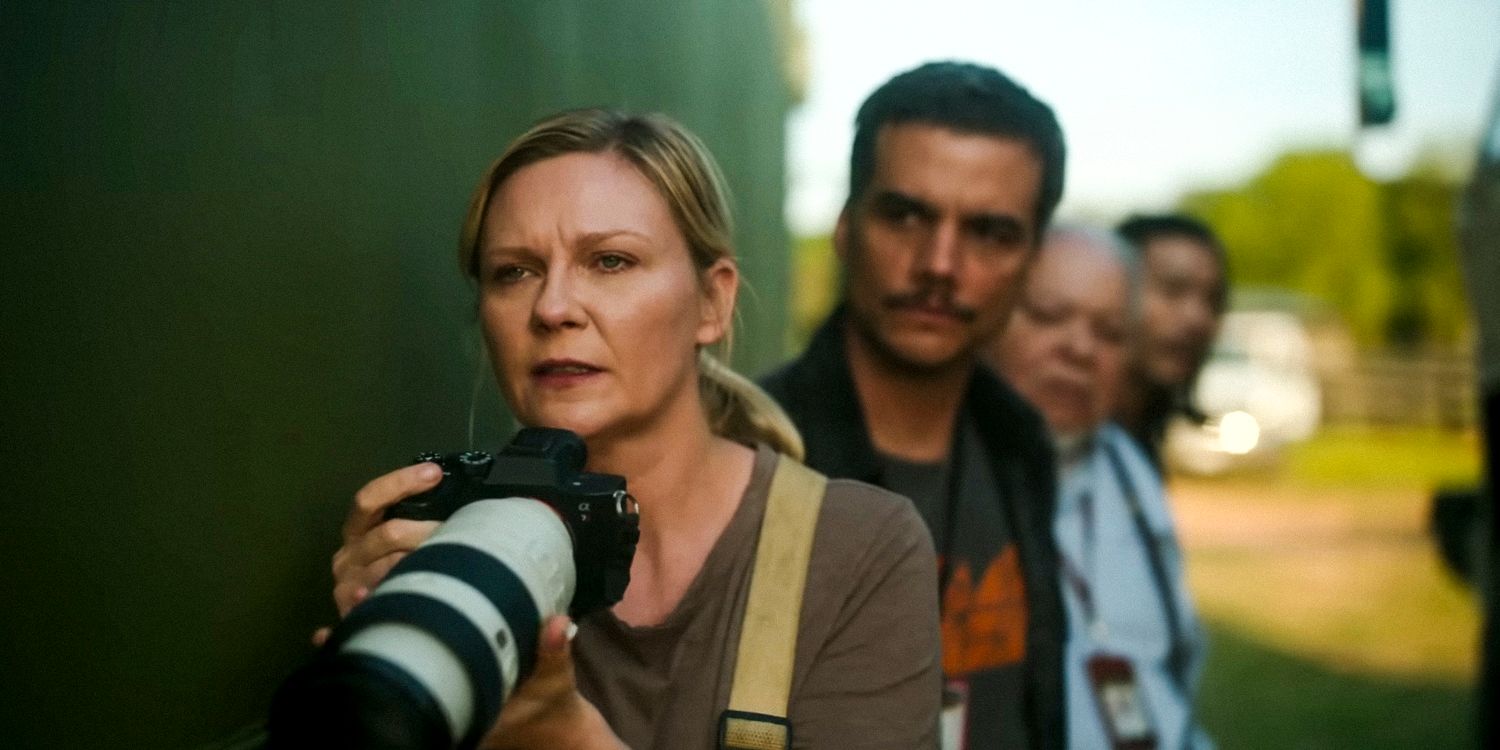Warning: This post contains major spoilers for Civil War.Alex Garland’s latest film, Civil War, ends with multiple deaths. The film is set in a dystopian future of the US, where a civil war has broken out and the states have been split into various factions, including the Western Forces, which are fighting against the Loyalist States with plans to kill the president. Starring Kirsten Dunst as Lee, Civil War finds the war photographer and what’s left of her team after Sammy’s death — Joel and newbie photojournalist Jessie — heading to the heart of Washington, DC alongside the Western Forces, who have seized the White House with the president inside.
With all the shooting and hiding for safety, Lee’s walls begin collapsing, as the weight of Sammy’s death and all that she’s seen threatens to pull her under. Once the Western Forces breach the White House, Lee, Joel, and Jessie follow along. The Secret Service and the Western Forces exchange gunfire, and Jessie rolls into the hallway to get a good shot. Lee jumps in front of her to save her from the bullets. Shortly after, the president is captured, and Joel asks him for his final words before he’s killed, with Jessie taking a photo of his final moments.
Lee & The US President Die At The End Of Civil War
Lee sacrifices herself to save Jessie
While Lee is adamant about protecting Jessie from the horrors she’s been so jaded by for the entirety of Civil War, the film culminates with Lee sacrificing herself to save Jessie from being shot by the Secret Service. Jessie photographs Lee’s death, suggesting her apparent disconnect between a war photographer and her subject. This is Jessie at the start of her photography career, whereas Lee deletes the photo of Sammy’s dead body from her camera at the end of hers.
Lee losing her mentor changed her, and the war zone near the White House put everything into focus. Lee stepped in to save Jessie because she was all out of steam; she had given her all for years and losing Sammy was witnessing the true consequences of the job. Lee jumped in front of Jessie to ensure the new war photographer would live on to witness the Western Forces taking down the President. Lee was still jaded, but she recognized the importance of the work. She also didn’t want to witness Jessie’s death when she was still so young.
Nick Offerman’s US President, meanwhile, is killed by a few soldiers serving the Western Forces. His final words are along the lines of “Don’t kill me, please,” which Joel confirms is good enough for an exclusive before he’s shot, ending his three-term presidency, though it’s unclear if the president’s death also means the end of the civil war. Though Lee didn’t live to see the president fall, she’d at least accomplished her goal of getting to Washington, DC, and being the first team to get a quote from the president.
What Kirsten Dunst Has Said About Lee’s Death In Civil War
In an interview with Variety, Dunst cleared up any speculation that her character Lee was killed by friendly fire at the end of Civil War. “It was definitely fired from the president’s Oval Office. I know when to cross and when not to cross with the soldiers when they fire. I know the signals and how to read them. You just know when it’s time to move and when it’s time not to. That’s something that Cailee’s character Jessie obviously does not know.” In this light, Lee’s death was certainly forced by Jessie’s negligence, although had Sammy not died so recently, which sent Lee down a spiral of existential guilt and confusion, she may not have even tried to save Jessie in the first place.
The President’s Last Words & Meaning Explained
The President begged, “Don’t let them kill me.”
In the final scene of Civil War, Joel asks Nick Offerman’s President for a quote. Terrified and helpless, the President desperately pleads to Joel his last words, “Don’t let them kill me.” Joel accepts this as a suitable quote for posterity, as a Western Force officer shoots and kills the President with two swift shots to the heart. Someone who is in the President’s position might have a more profound or moving statement for the history books, but Offerman’s President revealed his true nature as a coward clinging to power and someone unfit for the job. With one simple but telling statement, the President shows his true colors instead of trying to explain his motivations and ideologies, which ultimately exposes his weak stature.
Why The Western Forces Killed The President
The President became a tyrant who betrayed American citizens
The main objective of the Western Forces throughout Civil War was to end the reign of the tyrannical President, played by Offerman, who disavowed the United States Constitution by holding onto his executive power for a third 4-year term. By refusing to abide by the Constitution, the President had set a dangerous precedent that is essentially un-American, which has caused a national outcry to the point of succession and the forming of militias. If there is one person to blame for the start of the Civil War in Garland’s cautionary film, it’s unquestionably Offerman’s President. His death at the end of the movie is crucial because he represents the source of the entire conflict and ultimately its end.
Civil War’s Final Shot Explained
Jessie will become a national hero
The final shot of Civil War is quite literally a camera shot through the lens of Jessie’s camera. It shows Moura’s character Joel standing over the dead body of Offerman’s President with a few of the Western Forces who neutralized the target. In that moment, Jessie takes the most significant photo in the history of the United States and will inevitably become a national hero. Dunst’s Lee, who was killed in the line of fire trying to protect Jessie, likely would have taken the photograph if she were still alive. In this way, Jessie ultimately fills in Lee’s shoes as the civil war comes to an end.
What Alex Garland Has Said About Civil War’s Final Shot
Alex Garland spoke on the intention behind the final shot of Civil War. “[The photo comes at a] personal cost, and not just her personal cost, but [to] people around her. But that’s part of the transactional deal that sometimes people have to make to do that thing. In 20 years’ time, what would be the image that survived this? If there was a news article that was illustrative of that moment, what would that image be? That is the image she takes.” The final shot of Civil War would theoretically be printed in every newspaper, magazine, and textbook in the country, and likely the world, marking a new beginning for the U.S.
What’s Next For The US After The Western Forces’ Successful Operation
With the president dead, the US’ future is in question
With the president fallen, the Western Forces’ goal has been accomplished. That leaves their future unknown by the end of Alex Garland’s film. The Western Forces, led by the seceded states of California and Texas, have historically been on different sides of the political spectrum. They had a shared goal during Civil War: Eradicate the fascist president. Now that their plans have come to fruition, the future of the US is up in the air. It’s possible the Western Forces will rejoin the greater US and reunite the country.
It could also be that California and Texas will go back to being on different sides politically, though that may take much longer considering the way the country has been divided in the civil war. What’s more, with the president’s death the US’ future is called into question. It’s likely that a leader with the Western Forces will emerge, and that could create an entirely new conflict. Regardless of how things shake out, the outcome of the Western Forces’ operation positions them as a powerful party, one that could shape the rest of the factions and the US’ future.
Civil War’s Ending Is Just As Ambiguous As Its Politics
Alex Garland wanted to keep it that way
Civil War ends with the US President’s death at the hands of the Western Forces. What it doesn’t reveal, however, is how the country will move forward in the aftermath. The film itself throws viewers into the midst of an ongoing conflict without revealing when or even what caused the movie’s civil war, though there are allusions to the president throwing out the Constitution. But the ending is ambiguous, since there’s no confirmation regarding what will happen next. Garland likely wanted to keep it that way, considering Civil War’s politics are equally undefined.
It’s muddled in a way that gives enough to understand what’s going on but not enough to make a statement either way. Civil War has the kind of ending that leaves audiences with more questions than answers. The Western Forces hated the president and wanted to do away with him because he was a fascist, but the film didn’t reveal what their plans would be in the aftermath of his demise. What the US will look like in the years to come is unclear, and Garland leaves it up to viewers to decide what may or may not happen next.
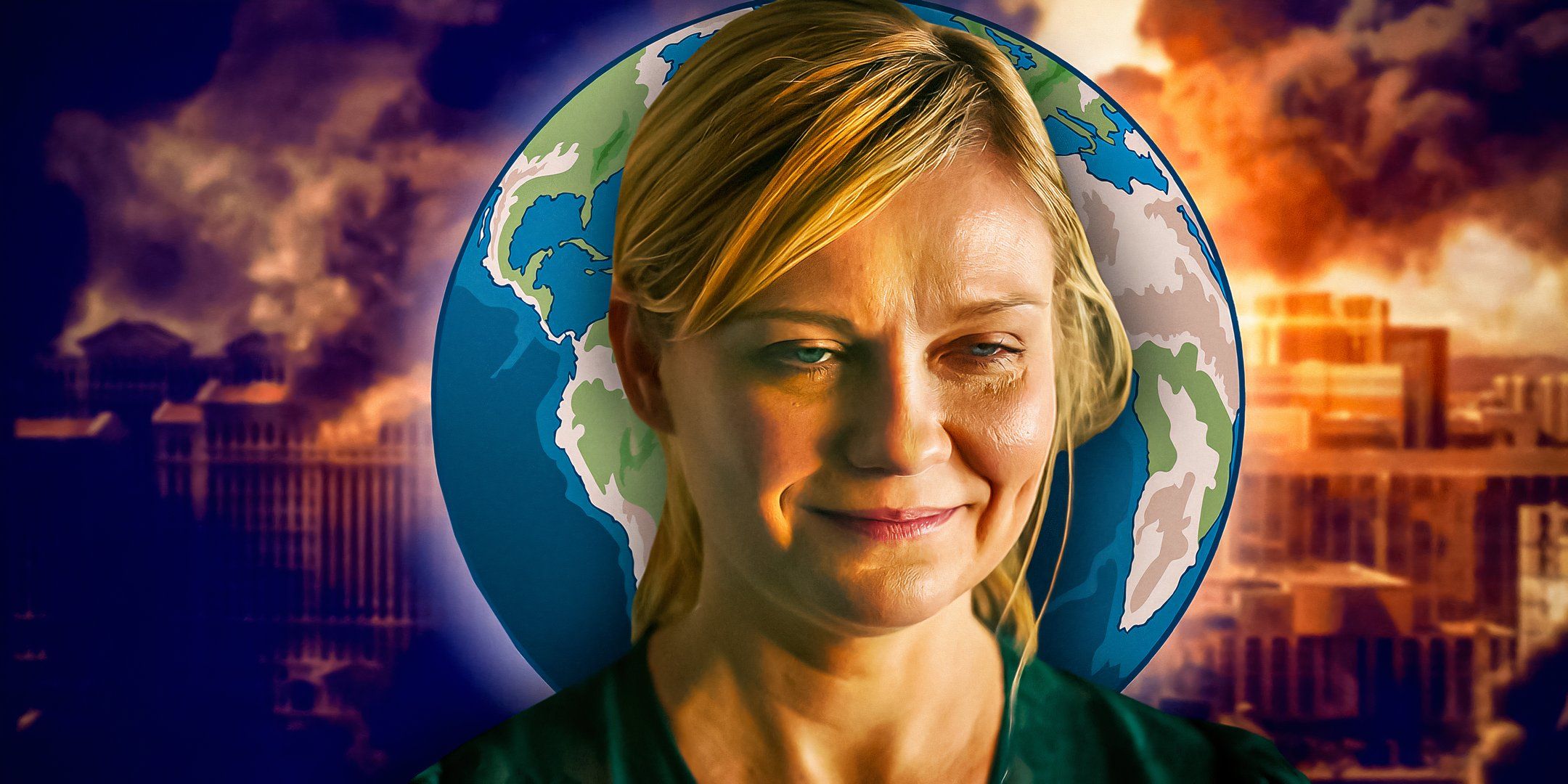
Related
Where Was Civil War Filmed?
Alex Garland’s Civil War paints a compelling portrait of war photography and journalism — in part because of the movie’s real-life filming locations.
Civil War’s Political Themes Explained By Alex Garland
While politics is not exactly the heartbeat of Civil War, Garland certainly made a statement by having the politically opposite states of California and Texas join forces in the most unlikely of alliances. In an interview with The Atlantic, he commented, “I find it interesting that people would say, ‘These two states could never be together under any circumstances.’ Under any circumstances? Any? Are you sure?” Garland’s message here is that even the most politically dissimilar states in America would come together in order to protect the foundation notion of “a more perfect union.” It’s a reminder that underneath it all, each state enjoys the freedoms of democracy and shares an ideological foundation.
Where The Florida Alliance & The Loyalist States Are In Civil War’s Ending
Civil War’s primary focus is on the Western Forces
Given their vendetta against the president, Civil War’s Western Forces take up the majority of the film’s focus. The Florida Alliance is briefly mentioned near the start of the film, but the alliance’s perspectives and allegiances regarding the war are vague, though it seems like they’re allies with the Western Forces. However, Civil War’s ending doesn’t reveal much of anything about where the Florida Alliance and the Loyalist States’ forces are. Considering the Western Forces approach into Washington, DC, it’s revealed the Loyalists surrendered, leaving the president undefended. They likely retreated from the capital, no longer in the fight.
|
US Faction |
Status |
|
Western Forces |
Seceded from the United States |
|
New People’s Army |
Still part of the US; allegiances unknown |
|
Loyalist States |
Still part of the US; allegiances to the president |
|
Florida Alliance |
Still part of the US; allegiances unknown |
|
Alaska |
Neutral |
During a news segment at the start of Civil War, a journalist confirms The Florida Alliance was busy stopping the Carolinas from an insurrection. Additionally, there is, according to Civil War’s movie map of alliances, the New People’s Army, which is made up of northwestern states like Oregon. That part of the country is not really highlighted in Civil War, so there’s no telling what they’re really up to. The Western Forces are so central to the narrative because of their power and influence, so much so that the remaining factions fall to the wayside.
Greenland, though not a part of the United States, is also neutral, like Alaska. Greenland and Alaska are where the president would have gone to negotiate his surrender had he not been killed by the Western Forces.
Why Civil War’s Ending Is Divisive
It can be seen as abrupt and lacking a resolution
The ending of Civil War can be divisive for many reasons, the most common of which is that the film ends abruptly with hardly any resolution or epilogue once Offerman’s President character is dead. Some viewers may also find it frustrating that Lee died so suddenly and frankly, foolishly. It’s easy to be angry at Jessie for naively throwing herself into harm’s way and costing Lee her life. Civil War’s ending packs the right punch to go along with its themes, however, as the film begins to develop on what will become the most famous photo in United States history. It seals the idea that Lee has passed the torch onto Jessie, who has become completely desensitized and emotionless by the film’s end.
The Real Meaning Of Civil War’s Ending
The film’s finale brings meaning to photojournalism
Civil War’s ending centers on the importance of photojournalism in the midst of wars and horrific human actions. Near the start of the film, Lee says that surviving a war zone made her believe she was sending a warning home, but then nothing much changed. And yet, the film’s finale showcases how crucial the documentation of events is — no matter how awful they are. Lee’s career as a war photographer may not have ended any wars, but witnessing them through her lens serves as a reminder of the history and events that took place.
What’s more, Civil War’s ending asks the audience to make up their own minds about the war, through the perspective of Lee and her team’s photographic documentation and experiences. It brings meaning and weight to war photography as a pivotal element of journalism, especially as Lee wants to do her job with the least amount of bias. The deaths of Sammy and Lee at the end of Civil War suggest they didn’t die for nothing and that their work, which will continue on through Joel and Jessie, was critical.



